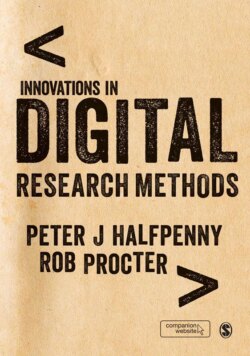Читать книгу Innovations in Digital Research Methods - Группа авторов - Страница 47
На сайте Литреса книга снята с продажи.
2.3.1 Data on Economic Circumstances
ОглавлениеKey sources for capturing data on people’s economic circumstances in the UK include the Census39 and the Labour Force Survey (LFS).40 The Census provides a profile of the UK population every 10 years. It collects information on people’s employment, health and family circumstances. It is a key tool in estimating population change. Data from the Census is available in summary tables as well as in samples of microdata. Specific data tables can also be requested for an administration fee. The questions on economic circumstances are, however, limited. It is notable that it is anticipated that the 2011 Census will be the last full census in the UK and there will be a shift in the future to smaller-scale data gathering and use of administrative records.41
The LFS is a quarterly survey of over 60,000 households. The LFS is now linked with the UK Annual Population Survey and includes increased coverage of urban areas down to local authority district level. The data includes a longitudinal component, with respondents being interviewed five times at three-monthly intervals. Questions cover such variables as people’s key demographics and occupation, training, health, earnings and benefit claims. Some of the measures are internationally comparable. Access to the data from such surveys as the LFS is often free (although usage is not completely unrestricted).
For many survey datasets, access to particular variables, geographic levels and detailed information is restricted because of concerns about confidentiality and statistical disclosure risks.42 For example, only samples of UK Census data and certain variable codings are released at particular geographic levels. This can inhibit analysis at lower geographies. For some government surveys and datasets, special licence use versions are available which contain more detailed variable codings and geographic information.
Other sources of data on people’s economic circumstances include income data available from commercial data providers. The data is updated from different sources, including surveys and other data gathering tools such as product warranty forms. Such data provides income estimates at the individual level, though these are often imputed. Many of the variables have bounded values, for example, age and income are in bands. Other variables cover people’s spending, savings and debts.
Consequential data, such as administrative data, including information on earnings, tax payments and benefits claims, are held by government departments and, if not released directly, can be available for social science research purposes under special agreements. Some commercial information is also available in the public domain. For example, organizations such as estate agents necessarily release data on properties on their books as part of their core business. If made available for research purposes, data from the Citizens Advice Bureau (CAB), and agency and bank consultations concerning debt advice, which includes anonymized client details, type of problem, advice given and outcomes, could also be examined alongside publicly available data from land records and on share ownership.
Open data resources such as OpenStreetMap43 can be used to map areas of deprivation and can be combined with official data such as the ONS Neighbourhood Statistics.44 For research into the impact of the economic recession on people’s lives, consequential data from Internet searches for credit advice and locations of cash conversion shops could be of value. Self-published data such as online discussion groups and forums could be used for examining people’s attitudes towards the recession and their coping behaviour. For example, the online network and web resource Mumsnet, which is a self-selected online network of parents, has a large number of postings from its members on the recent economic recession. In addition, the organization itself has conducted a survey of its members on the issue of household spending. Example (anonymised) Mumsnet discussion group comments include:
I have to cook on a very tight budget so when I go shopping I go straight to the reduced selection and always stock up with as much reduced food as possible and either cook it that night and freeze it down, or freeze it straight away. That way my family can eat very healthy for a fraction of the price. (‘TAM’, 2011)45
Here, the social science researcher might code for key information, as they would do in a conventional qualitative textual analysis. This might include coding for: gender, type of food planning, attitude to cooking, healthy eating and family, language use, and comment length. Links to other posts might also yield even richer data. The researcher could also take a direct follow-up approach including posting messages to the online group, collecting information using methods such as purposive surveys, follow-up interviews and online discussions (effectively purposive online focus groups). The key challenge here in terms of social science research lies in the purposive nature of the samples and the limits to what can be claimed about any patterns identified in such self-published data.
Closely linked to data on people’s economic circumstances is evidence on people’s consumption behaviour and we now consider this.
